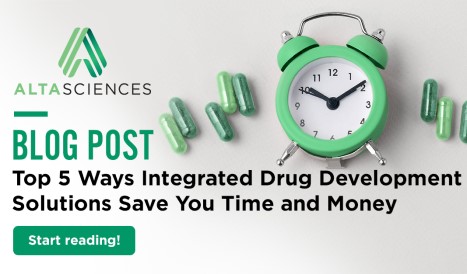Five Facts About Psychedelics for Mental Health
As the incidence of mental health issues increases around the world, most recently exacerbated by the COVID-19 pandemic that has pushed depression to nearly triple the rate of its pre-pandemic level[i], a resurgence of interest in psychedelic drugs has spurred a new wave of research. With an evolving regulatory environment easing some of the barriers to research, there is new hope for the development of potential treatments. Let’s take a look at what we know so far about psychedelics for the treatment of mental health illnesses.
1. How are psychedelics made?
Psychedelics can either be naturally derived or synthetic. Plants containing natural psychedelics, such as “magic mushrooms” (psilocybin), peyote (mescaline), and ayahuasca (DMT), have been used by traditional cultures for thousands of years[ii]. On the other hand, drugs like LSD, first synthesized in 1938, are created in the laboratory with recent research including the development of second-generation molecules capable of conferring the mental health benefits of psychedelics without the trip.
2. What kind of mental health issues can be treated with psychedelics?
3. How do psychedelics address mental health issues?
Psychedelics can elicit spiritual experiences, allowing individuals to transcend their worries by breaking the perceptual boundaries of space and time, and enabling a sense of oneness with the universe. Their healing effects may be due to the ego dissolution that enables people to see their lives in a broader perspective.[iii]
4. What is the history of psychedelic research?
In the 1950s and 1960s, psychedelics were tested on about 40,000 people, with over 1,000 articles being published on their therapeutic effects. However, following a dramatic increase in recreational drug use, they became associated with the 1960s counterculture, and were banned from scientific research until the current resurgence that began in the early 1990s.
5. What are the risks of taking psychedelics as a treatment for mental health?
Although generally safe, psychedelics may cause serious side effects like psychosis, paranoia, and cardiovascular issues (albeit rarely). In addition, their effect on the central nervous system can compromise sound judgment, leading to accidents. These risks can be attenuated by taking the drugs in a controlled setting with expert supervision by trained medical experts.
While Schedule 1 drugs, like psychedelics, are currently only approved for ongoing research, there is reason to hope for new and radically different treatments for mental health issues, helping to enable improvements in quality of life.
References
https://www.medicalnewstoday.com/articles/psychedelic-therapy
https://www.vox.com/2015/7/24/9027363/acid-lsd-psychedelic-drugs
https://www.health.harvard.edu/blog/back-to-the-future-psychedelic-drugs-in-psychiatry-202106222508
https://www.nature.com/articles/d41586-021-00187-9
https://www.who.int/health-topics/mental-health#tab=tab_2
https://www.cdc.gov/drugoverdose/deaths/
https://www.who.int/news/item/02-03-2022-covid-19-pandemic-triggers-25-increase-in-prevalence-of-anxiety-and-depression-worldwide
Muraresku, B., Hancock, G. (2021). The immortality key: The secret history of the religion with no name. St Martin's Press.
[ii] https://sites.coloradocollege.edu/indigenoustraditions/6-%E2%80%A2-independent-projects/peyote-in-native-american-traditions/
[iii] https://www.cell.com/current-biology/fulltext/S0960-9822(16)30062-8



